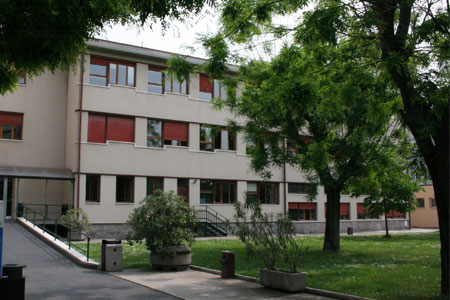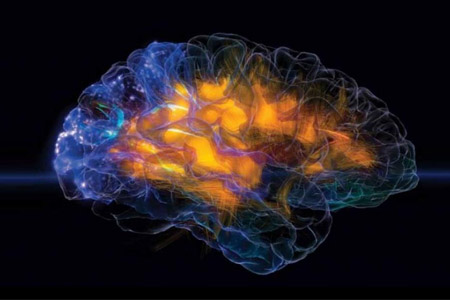Cystic fibrosis (CF, MIM 219700) is a recessive genetic disease that is caused by mutations on both CFTR alleles (ABCC7, MIM 602421 ) (http://www.genet.sickkids.on.ca). The spectrum of CFTR-associated phenotypes is quite variable, going from classic CF to mild monosymptomatic presentations, like idiopathic pancreatitis, chronic rhinosinusitis, nasal polyposis, asthma, disseminated bronchiectasis and congenital bilateral absence of the vas deferens (CBAVD). The clinical severity cannot be entirely predicted from CFTR genotype, but result also from genetic (non-CFTR) and non genetic environmental influences. Insights into genotype /phenotype relations have recently been gained in this disorder ( ). The strongest relationship exists between “severe” mutations in the gene that encodes the cystic fibrosis transmembrane regulator (CFTR) and pancreatic insufficiency. The relationship between “mild” mutations, associated with residual CFTR function, and expression of disease is less precise. Atypical “mild” mutations in the CFTR gene have been linked to late-onset pulmonary disease, CBAVD and idiopathic pancreatitis. Less commonly, sinusitis, allergic bronchopulmonary aspergillosis and possibly even asthma may also be associated with mutations in the CFTR gene, but those syndromes predominantly reflect non-CFTR gene modifiers and environmental factors. Given this background, it is not surprising that disease expression is complex and that nonclassic CF phenotypes exist ( ). Moreover, CFTR deltaF508 monozygous twins were more concordant in respiratory and intestinal symptoms than dizygotic twins and sib pairs, indicating that disease severity is modulated by an inherited component in addition to the CFTR gene itself (Mekus et al., 2000, Bronsveld et al., 2001). Environmental factors could cause some of that variation, but it is possible that modifier genes may influence the observed phenotypic variation. Using a mouse model for the condition, Tsui and his colleagues ( ) mapped the responsible genes to chromosomes 7 and 5; in humans, it appears to be on chromosome 19. A subsequent linkage study using markers from the syntenic region on human chromosome 19q13 was conducted in CF siblings concordant and discordant for meconium ileus (MI) and pulmonary function. An association was found with MI, but no genes were identified as yet (Zielenski et al., 1999). Another approach to identify CF modifier genes is the study of candidate genes, based on the functional characteristic of the encoded proteins and their apparent relevance to CF pathophysiology (Zielenski et al., 2000). Several studies have focused on CF lung disease which is the most common CF presentation (Rosenstein and Cutting, 1998) and that usually represents the most severe clinical manifestation, and the most threatening cause of death. Recently, a further evidence of complexity has been discovered for CF. Cutting et al., ( ) has reported that some patients with a milder CF phenotype do not have any mutations in CFTR. This indicates that the hypothesis that CFTR gene dysfunction is a requisite for the development of CF might not always be true (28 ). Moreover, the CF lung disease has a complex pathophysiology involving bronchial bacterial infections, inflammation, and progressive damage to airway epithelia. These processes include a large number of different factors, many of which have the potential to modulate disease severity. Further phenotypic analysis led to the identification of the association of low-expressing mannose-binding lectin (MBL; also known as MBL2) alleles, HLA (human leukocyte antigen) class II polymorphisms, variants in tumour necrosis factor-α (TNFA), transforming growth factor-β 1 (TGFB1) with pulmonary aspects of the disease, alpha 1-antitrypsin (A1AT), alpha 1-antichymotrypsin (A1ACT), human beta defensins (hBD), interleukin-4 (IL-4), and beta subunit of the IgE high affinity receptor (FcepsilonRIbeta) ( ), the correlation of intronic nitric-oxide synthase 1 (NOS1) polymorphisms with variability in the frequency and severity of microbial infections (25) , and the contribution of mucin 1 (Muc1) to the gastrointestinal aspects of the CF phenotype in mice (26).
The aim of this study is to elucidate the variable severity of clinical manifestations of cystic fibrosis (CF), trough:
Association studies between several candidate genes and respiratory and gastrointestinal parameters of CF patients with different clinical manifestations.
Microarray analysis of candidate gene selected by Unit 2 in respiratory airway epithelial cells of CF siblings bearing a discordant pulmonary phenotype.
Microarray analysis of candidate gene selected by Unit 3 in respiratory airway epithelial cells of CF siblings bearing a discordant pulmonary or liver phenotypes.
Microarray analysis of candidate gene selected on the basis of demonstrated or supposed physical and/or functional interaction with CFTR.







